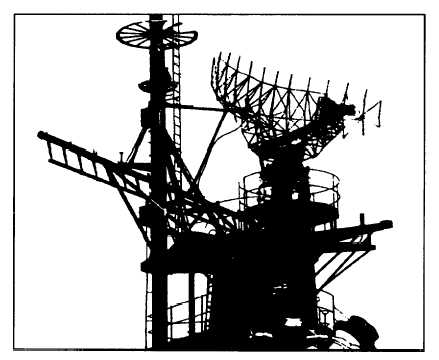CHAPTER 2
RADAR SYSTEMS EQUIPMENT CONFIGURATIONS
In chapter 1, we discussed the configuration of a
training, you can become an expert maintainer of ANY
basic pulse radar system and the three basic types of
radar sets. We cannot cover in one chapter every radar
used by the Navy or every application of radars at the
various units. Therefore, this chapter will present only
a general overview of commonly used radars. We will
not teach you specific equipment, but will help you
identify and understand the operation of surface
search/navigation radars, air search radars, 3D radars,
CCA/GCA radars, and various repeaters used in the
Navy today. For each type of radar, we will provide a
basic system description, followed by its “theory of
operation” and a brief explanation of the maintenance
concept.
Most of the radar equipment discussed in this
chapter has specific maintenance training available.
However, except for certain crypto equipment, you do
not need specific training to work on the gear. By
combining the information in the appropriate technical
manual with your extensive basic electronics
background from “A” school and the general knowledge
you get through training manuals and on-the-job
electronic equipment.
You’ll be surprised at how much you can figure out
on your own. And if you ever get stumped, there are
ways to get help.
You may request maintenance
assistance from tenders, repair ships, Mobile Technical
Units (MOTUs), or NAVSEA field activities. In
addition, Direct Fleet Support (DFS) will resolve
maintenance repair problems beyond the capability of
ship’s force, Ship Repair Facilities (SRFs), Intermediate
Maintenance Activities (IMAs), and MOTU personnel.
If you need DFS assistance, submit a request to the
applicable NAVSEACEN via your type commander, as
prescribed in NAVSEAINST 4350.6.
The first radars we’ll talk about are the surface
search and navigation radars.
SURFACE SEARCH AND NAVIGATION
RADARS
Recall from chapter 1 that the two main functions
of surface search and navigation radars are to (1) detect
2-1


